Designer: description of the profession, types, responsibilities and requirements

The profession of a designer is directly related to the creation of structures and the development of images of interior models, furniture, accessories, computer graphics, landscapes and much more. Let's talk about who designers are, give a description and characteristics of the profession, consider what responsibilities they perform and what qualities they must have in order to succeed in their specialty.
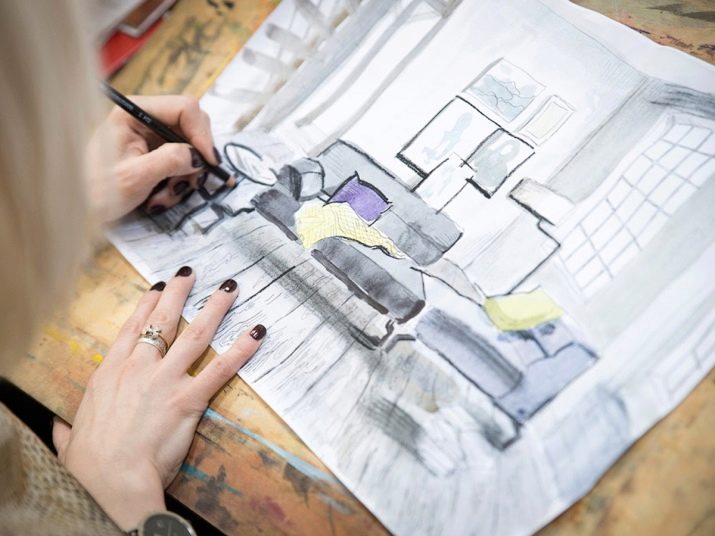
What is this profession?
The designer is a specialist in the development of layouts of the surrounding reality, and this model can be both real and virtual, can find its embodiment in life, or remain just an idea. The main design tools will be graphic drawings, concepts, blueprints and all kinds of diagrams.... Designers provide ergonomics and ease of use for various items and interior solutions. These specialists should know well and be able to combine different objects, materials, shapes and textures. Besides artistic ability, they must have skills in working with computer programs, since the activity of any designer involves the constant introduction of information technology and new developments.
Many people confuse the profession of a designer and an artist. The difference between them is in the practical use of the results of work. A painter can afford to draw surrealistic models, for example, interior design, without thinking at all about how to place all the depicted furniture there. The goal of the designer is completely different - he must create a project that can be brought to life so that people can live and successfully interact in this interior.
That is why, in order to become a professional, it is not enough to graduate from art school alone, it is necessary to receive a specialized education.

What is he doing?
The tasks of the designer include the design, as well as the creation of the latest modern concepts of interiors / landscapes / goods / computer products. When creating projects be sure to take into account the ergonomics of the solution, ease of use, as well as the color design and overall aesthetics of the finished product. When drawing up layouts, designers should first of all be guided by the requests of individual customers or the wishes of consumers in general. During the preparatory work, specialists make the necessary measurements and testing, after which they embody the idea in the form of a schematic drawing or a model of the structure.
All necessary work can be performed both independently and in tandem with photographers, illustrators, psychologists, marketers and other related specialists.
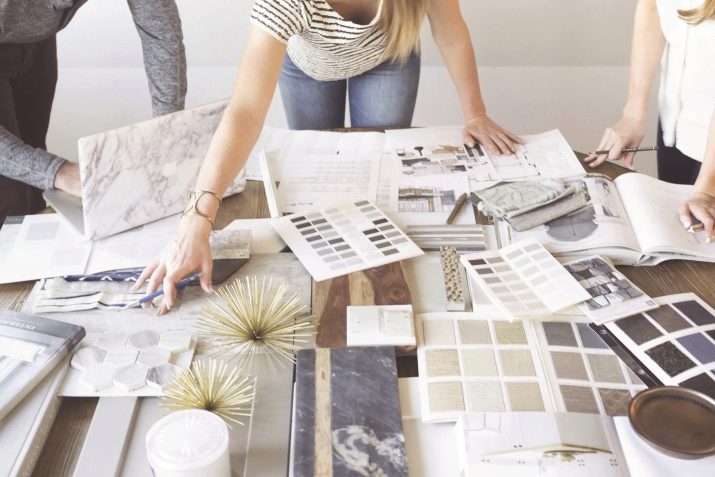
Advantages and disadvantages
Like any other profession, the design direction has its advantages and disadvantages. So, the pluses include the following points.
- Demand. The profession is popular and relevant. According to experts, in the coming decades, interest in the services of designers will only grow.
- Decent wages qualified specialists.
- Ability to work both in the office and as a free freelancer.
- Creative work, allowing you to realize your creative potential and improve the surrounding reality.

Not without its drawbacks.
- Difficulties in reaching a good pay level... Novice designers have to work for several years practically for a penny, filling their portfolio, since specialists without experience are not quoted on the market.
- Practically irregular working hours.
- For a freelance designer, a significant disadvantage can be irregularity of orders. They can get a tidy sum for the project, and then sit waiting for several weeks.
- Experienced designers say that the most difficult thing in this profession is the subjectivity of work assessment.... Even with the highest qualifications and vast experience, designers will always face misunderstandings from customers, builders, engineers and other professionals.
Unfortunately, even those workers who have been repeatedly noted by the world community cannot avoid this.

What kind of designers are there?
The range of job duties and tasks of a designer is limited not only by the professional skills and competencies of the employee, but also by the chosen specialization. The most popular areas today include the following.
- Interior design... Most ordinary people understand this profession as the ability to choose beautiful stylish furniture and arrange it ergonomically in the room. This is how those would-be specialists who have completed two-week courses see their work. In fact, the responsibilities of a designer are more complicated. The interior is not just furniture, it is also engineering communications, lighting, architectural groups. This specialist is obliged to come up with a finishing option, the location of the wiring, heating devices, ventilation.
- Web Designer. This is one of the most common professions today. Surely many have noticed that different sites with a similar subject matter and approximately similar structure may differ in their design. On some, everything is clear and structured, on others it can be quite difficult to find the necessary information.
- Site design - this is the very first thing that the user sees, a visual reflection of the functionality and positioning of the resource.Here it is not enough just to create an attractive image - it is important to consider how the portal will be laid out when handing over to the frontend developer, how convenient and understandable it will be for visitors, and what methods it is possible to achieve page conversion by. For this, it is not enough for a specialist to be able to draw beautifully in graphic editors, here it is important to know the basics of developing Internet projects.
- Graphic Designer... This is a specialist who creates a kind of shell. Examples of his work will be the creation of logos, corporate identity, navigation systems, as well as visual models of packaging and media. The product of his labor performs one function - to attract, thereby contributing to the promotion of the brand. At the same time, the graphic designer must be mindful of practical use. So, if a packaging for a chocolate is being developed, you need to understand how convenient it will be, whether its color scheme will be pleasing to the eye, whether the font and image used will become recognizable - all this directly depends on the professionalism and talent of the specialist.
- Landscape designer... In fact, this person performs the tasks of the designer and is responsible for creating the landscape of parks, squares and personal plots. This specialty requires deep knowledge of botany and engineering. Here you need to choose plants so that they not only look beautiful, but can also successfully grow and develop in the place designated for them, the development of irrigation and drainage systems is of no less importance. In the landscape project being drawn up, it is necessary to touch upon the practicality of landscaping, the effectiveness of the laid communications and the creation of conditions for the good survival of trees, shrubs and flowers.
- Industrial designer. This is the person in charge of creating projects for production. An example of this is the automotive industry, once a design of a vehicle has an impact on millions of people who want to buy such a car from a manufacturer or abandon it. However, here, too, much attention is paid not only to the aesthetic, but also to the engineering component, practicality and functional features of the car.


These are just the most popular destinations. Today there are over 20 types of design, each of which has its own individual specialization and requires a basic level of knowledge. For example, an image designer who creates beautiful clothes, shoes and jewelry; techno stylist developing products with built-in devices; bio-designers responsible for creating 3D mockups of organs and tissues. There is a wide demand for polygraphic and narrative designers, developers of layouts of the urban environment, as well as advertisements, manicure, curtains and other textiles, a designer-decorator, a designer-florist, a designer of photographs.

Responsibilities
In simple terms, a designer is a person who is called upon to create beauty and maintain functionality using his imagination and professional skills. The job description of these specialists includes:
- listening to the wishes of the customer;
- development of a general idea and project and its approval;
- concept drawing;
- execution of works on 3D-modeling to facilitate visualization of the concept;
- preparation of spatial models;
- design;
- prototyping;
- final agreement with customers;
- transfer of the project to work and control of compliance with the project at all stages of work.

Who is it suitable for?
In order to become a designer, you must have certain professional skills and personality traits.
Required professional skills
To optimize activities, a professional designer uses the most modern programs in his work. This specialist is required to:
- possession of classical and non-traditional graphic and drawing techniques;
- knowledge of the basics of computer design, SketchUp, AutoCAD, as well as ArchiCAD and Sweet Home 3D;
- possession of the skills of identity and economics of the project being developed;
- understanding the basic principles of marketing;
- to communicate with foreign customers, knowledge of a second language is required.
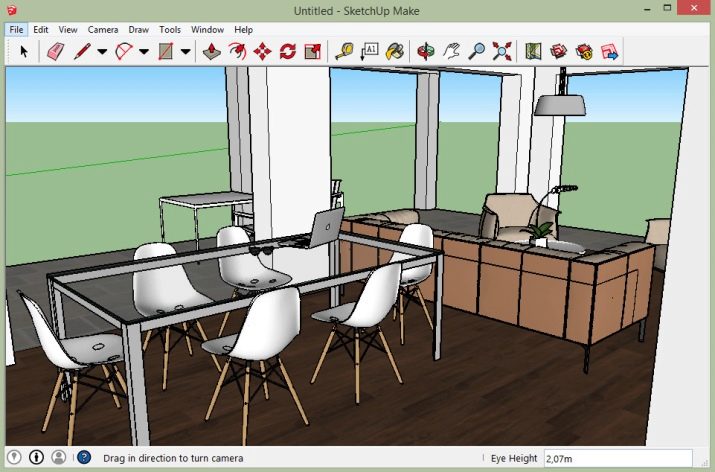
Personal qualities
No less attention should be paid to personal qualities.
- Logical thinking... The designer does not create a beautiful picture, but real projects, therefore, within the framework of this specialization, it is very important to think conceptually and logically.
- Individual style. Usually this quality is closely intertwined with creativity and allows you to generate unique ideas that will make the design more recognizable and stylish.
- Attentiveness. One single mistake can lead to the most unpleasant consequences. So, if an inaccuracy was made in drawing up an interior project, this is a hello to a complete violation of its functionality, and incorrect drawing up of a web design layout will turn into long sleepless nights for a layout designer.
- Perseverance. This artist can afford to wait for years for inspiration, and the designer is forced to work in conditions of a limited deadline, failure to comply with which is fraught with large penalties.
This specialist will not be hindered by observation, good imagination, the ability to think outside the box and process large volumes of incoming information. In order to facilitate mutual understanding with the customer, the designer must be sociable and able to persuade.
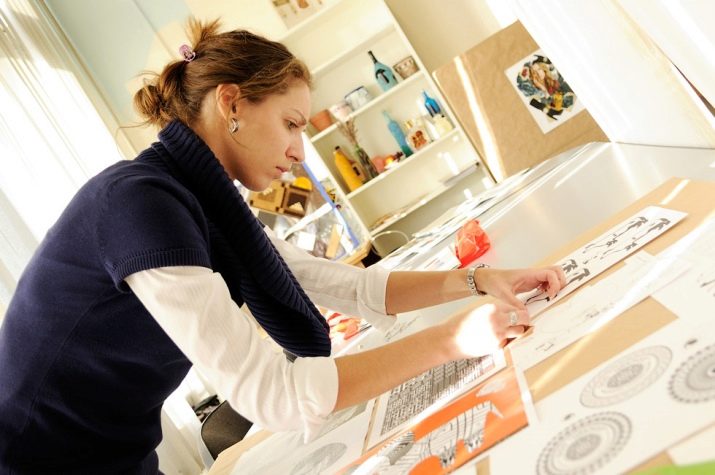
How much do they earn?
Salaries of designers directly depend on the direction of professional experience, the quality and number of completed projects, the level of proficiency in technical and software tools, as well as on the region of residence and many other factors.... Therefore, it is difficult to indicate the exact amount of remuneration for a designer, although it is quite possible to set benchmarks. In our country, specialists receive an average of 30-35 thousand rubles, in Moscow this amount is close to 40-50 thousand, however, in the Russian provinces, designers are often paid 10-15 thousand a month.
Best paid for the work of interface designers - their salary reaches 100 thousand, literally "on the heels" they are stepped by 3D designers - they get about 90 thousand, web designers - 75-80 thousand, interior designers - 50-70 thousand, furniture - up to 60 thousand and landscape designers - up to 50-60 thousand. An experienced designer can try to realize his strength in European countries, where specialists in each direction get much more. So, the same interface designer in the United States receives up to $ 3,000 a month, in Canada - 2,500, and in Germany the payment reaches 4,000 euros.

Education
Despite the widespread belief that design can be done by anyone with artistic talent and good taste, this profession nevertheless requires a good specialized education. In order to become a competent specialist, you need to be well versed in the technique of drawing up projects and master graphic programs perfectly... A true specialist never stops improving himself, as more and more new technologies appear every year.
Today, every city has institutes and universities offering design education programs. It is advisable to choose only large institutions that have a good reputation and monitor the quality of the process of obtaining specialized knowledge and skills. In universities, the "Design" direction usually includes several profiles:
- graphic design;
- clothing design;
- Industrial Design;
- game design and virtual reality creation;
- communication design and some others.

When entering a university, applicants usually take the Unified State Exam in the Russian language, mathematics, as well as history and social studies - a more detailed list depends on the characteristics of the educational institution. In some cases, you have to additionally pass a creative test, which will allow you to demonstrate the level of ability. After grades 9 and 11, you can enter a specialized college, which allows you to get a secondary specialized education in the design direction.
As practice shows, many students in the course of learning experience frustration, because they initially believe that they will be taught everything. However, this is far from the case - at the university they can give a theory, and real projects can only get you after gaining experience. In institutes in the first years, many general subjects are studied (cultural studies, political science), and an introduction to the profession is also given. In the same period, the acquaintance with computer programs-constructors begins.
In the third and further courses, a deeper study of the subjects necessary for the profession is already given, and all kinds of exhibitions and competitions are held. In the second half of the training, students are given the first projects to develop, and after graduating from the university, everyone is faced with the defense of a diploma. Usually, for this, the student is given a large project, which he must carry out independently and present it to the members of the commission.
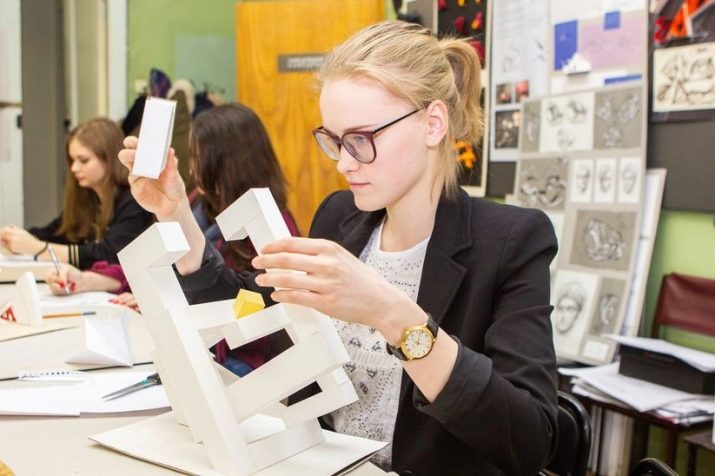
How to become one?
The main difficulty of any novice specialist is it is a lack of practical experience. However, this problem can be solved by taking in the development of low-paying orders in a small design studio or through freelance labor exchanges. In the latter case, you can work on the task without leaving your home, and the low salary is fully compensated by the accumulation of good experience. The second difficulty is the lack of ideas, there is no one-size-fits-all solution.
An aspiring designer should work on himself and his vision as much as possible in order to reveal his potential.

Prospects and career growth
There are several ways to make money in the design direction. First, you can become a freelancer and work for yourself. In this case, you can independently select orders depending on the level of payment and deadlines. Or you can get a job in the staff of a design bureau or a large project company and work in a team - in this case there is always an opportunity for career growth and, accordingly, a salary increase.
Aspiring designers usually find jobs in small studios. As a rule, there are no career prospects there, but work in them can only be used as a start for drawing up a portfolio and practicing skills acquired during training. The prospects for those who received their education at a prestigious foreign university are much better - this immediately opens the way to the international arena.
In any case, only a designer who is distinguished by hard work and constant self-study can achieve a good position and consistently high earnings.
It is important to take courses, constantly attend seminars, trainings, and take part in professional skill contests. You need to tirelessly perceive new data and study all the latest trends and trends, but at the same time not violate your individual style.
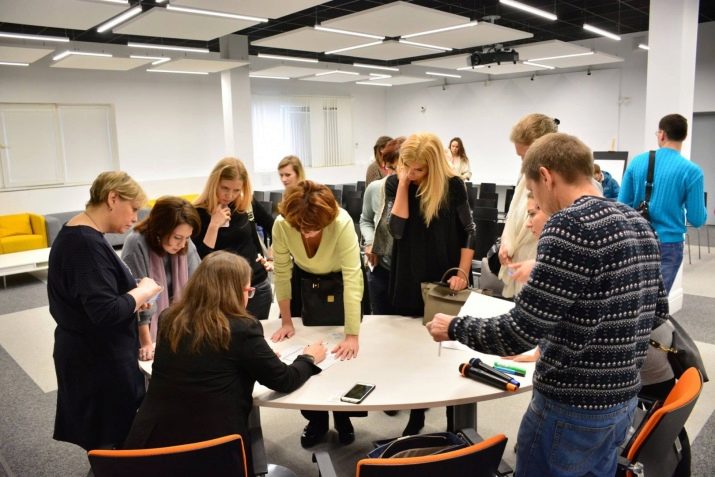









We, as an interior design studio, employ exclusively specialists with a higher architectural education.